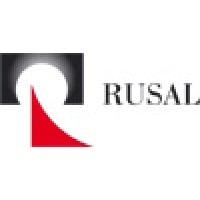
Chess Electrics
Strong
Electrical Contractor



Strong
Electrical Contractor

Strong
RUSAL is a leading global producer of low-carbon aluminium. More than 90% of the Company's aluminium is produced from renewable electricity, and by implementing innovative and energy-saving technologies RUSAL is able to reduce greenhouse gas emissions at all production stages. This has enabled RUSAL to become one of the first in the world to master the production of 'green' metal under the ALLOW brand. Less than 4 t of CO2 equivalent per 1 tonne of aluminium is the carbon footprint of ALLOW aluminium brand (scope 1 and scope 2) RUSAL operates in 20 countries on 5 continents. The company employs 50,000 people across the globe. In 2020, RUSAL accounted for approximately 5.8% of global production of aluminium and 6.5% of alumina. The Company’s key sales markets are Europe, Russia and the CIS countries, North America, South-East Asia, Japan and South Korea. The major end users are transport, construction, power and packaging industries. RUSAL owns proprietary smelting technologies and is developing new ones, including a revolutionary inert anode technology.
Security & Compliance Standards Overview
No incidents recorded for Chess Electrics in 2025.
No incidents recorded for UC RUSAL in 2025.
Chess Electrics cyber incidents detection timeline including parent company and subsidiaries
UC RUSAL cyber incidents detection timeline including parent company and subsidiaries
Last 3 Security & Risk Events by Company
Improper Protection Against Voltage and Clock Glitches in FPGA devices, could allow an attacker with physical access to undervolt the platform resulting in a loss of confidentiality.
Malicious code was inserted into the Nx (build system) package and several related plugins. The tampered package was published to the npm software registry, via a supply-chain attack. Affected versions contain code that scans the file system, collects credentials, and posts them to GitHub as a repo under user's accounts.
Flag Forge is a Capture The Flag (CTF) platform. In versions from 2.1.0 to before 2.3.0, the API endpoint GET /api/problems/:id returns challenge hints in plaintext within the question object, regardless of whether the user has unlocked them via point deduction. Users can view all hints for free, undermining the business logic of the platform and reducing the integrity of the challenge system. This issue has been patched in version 2.3.0.
Flag Forge is a Capture The Flag (CTF) platform. In version 2.1.0, the /api/admin/assign-badge endpoint lacks proper access control, allowing any authenticated user to assign high-privilege badges (e.g., Staff) to themselves. This could lead to privilege escalation and impersonation of administrative roles. This issue has been patched in version 2.2.0.
parse is a package designed to parse JavaScript SDK. A Prototype Pollution vulnerability in the SingleInstanceStateController.initializeState function of parse version 5.3.0 and before allows attackers to inject properties on Object.prototype via supplying a crafted payload, causing denial of service (DoS) as the minimum consequence.